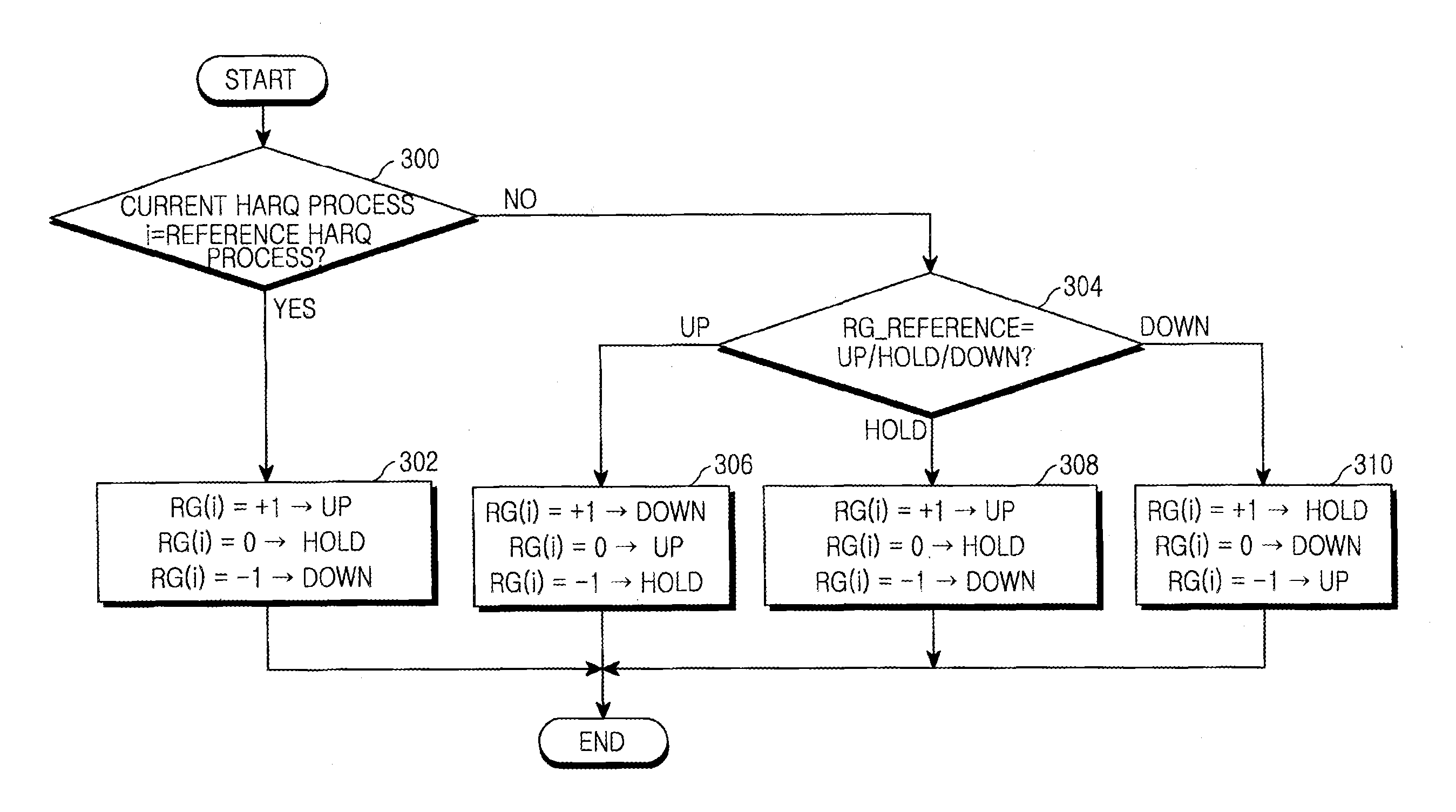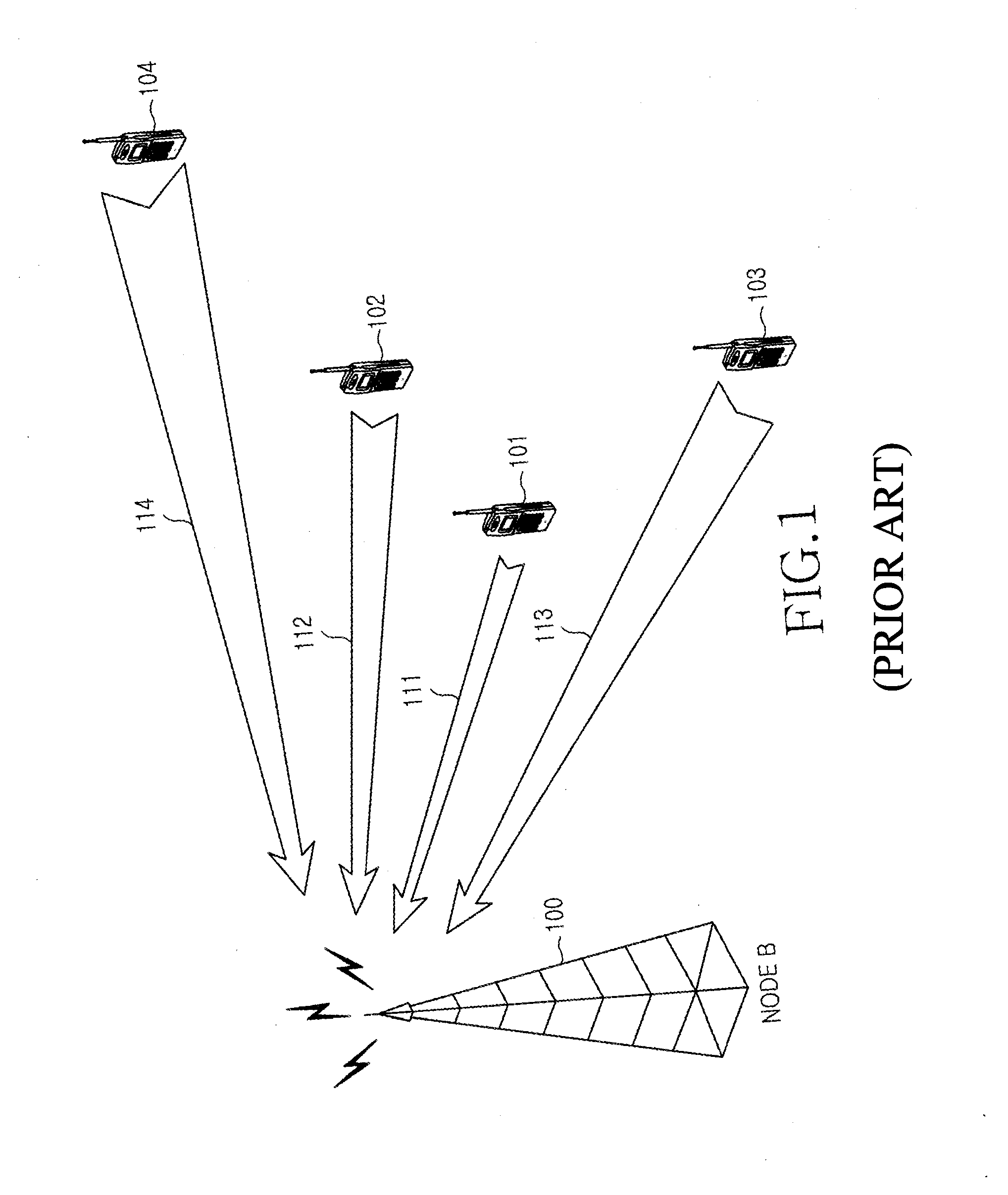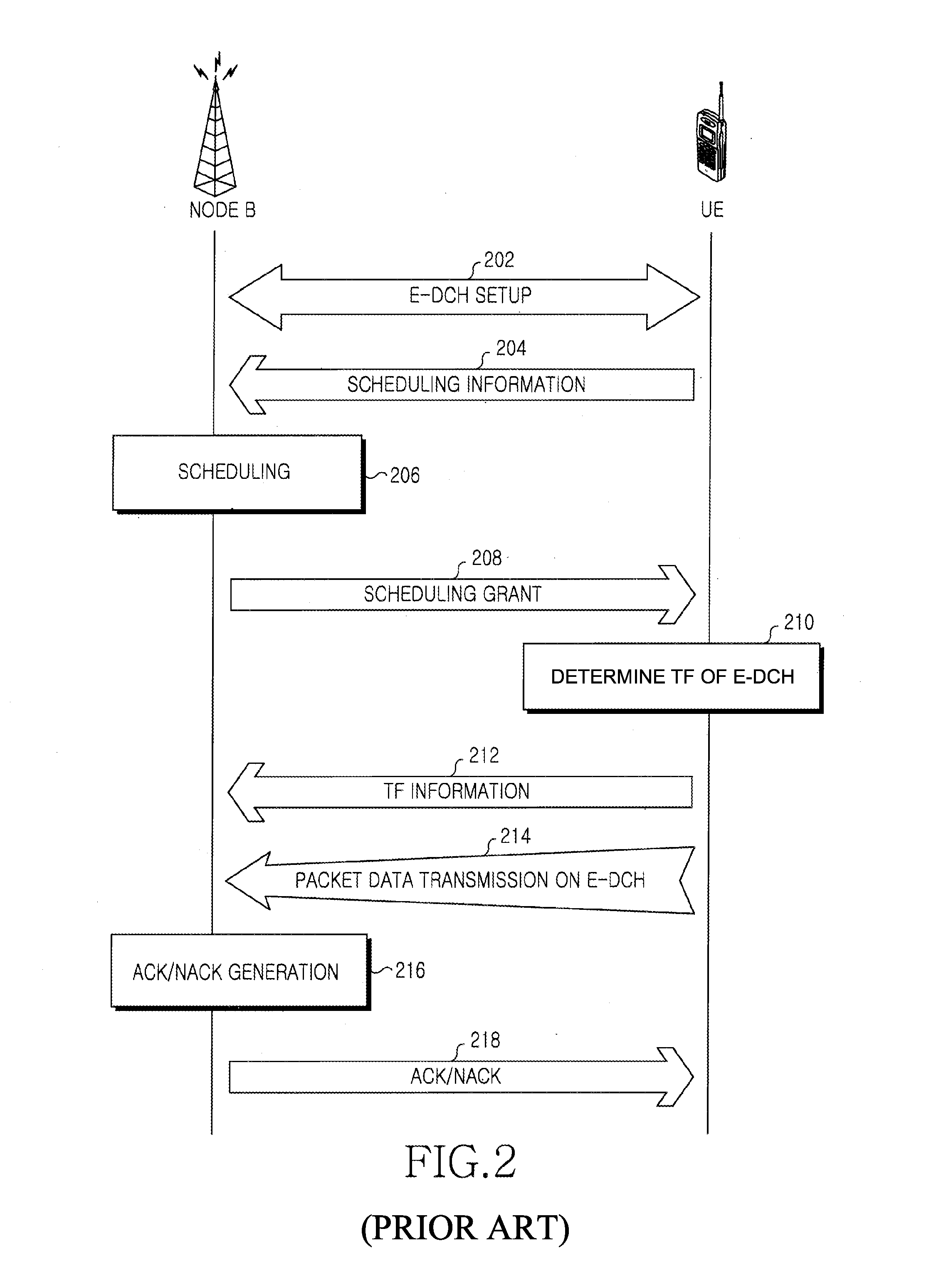Method and apparatus for transmitting and receiving downlink control information in a mobile communication system supporting uplink packet data service
a mobile communication system and control information technology, applied in the field of cdma communication systems, can solve the problems of interference of uplink signals with one another, and reducing reception performance in node b, so as to reduce downlink signaling overhead
- Summary
- Abstract
- Description
- Claims
- Application Information
AI Technical Summary
Benefits of technology
Problems solved by technology
Method used
Image
Examples
embodiment 1
[0050]FIG. 3 is a flowchart illustrating an operation for generating and interpreting a scheduling grant according to an exemplary embodiment of the present invention.
[0051]Referring to FIG. 3, the Node B determines whether an HARQ process for which to allocate a data rate is a reference HARQ process in step 300. The HARQ process for which to allocate a data rate is an HARQ process to be allocated to a current TTI and it is referred to as “a current HARQ process”. If the current HARQ process is a reference HARQ process, the Node B sets an RG to +1 for a rate increase, 0 (that is, DTX) for no rate change, or −1 for a rate decrease for the reference HARQ process according to scheduling in the Node B scheduler in step 302. Since the RG received from the Node B is intended for the reference HARQ process, the UE interprets an RG of +1 as a rate increase, an RG of 0 as no rate change, and an RG of −1 as a rate decrease.
[0052]On the other hand, if the current HARQ process is a non-referenc...
embodiment 2
[0080]FIG. 6 is a flowchart illustrating an exemplary operation for generating and interpreting a scheduling grant according to an embodiment of the present invention.
[0081]Typically, an up / hold / down command indicated by an RG applied to the same HARQ process number. For instance, if the Node B signals an RG indicating up for HARQ process #2, the UE is supposed to increase an allowed maximum data rate applied to the latest HARQ process #2 by a predetermined level.
[0082]Referring to FIG. 6, the Node B determines whether a current HARQ process to which a data rate is to be allocated is a reference HARQ process in step 600. In the case of a reference HARQ process, the Node B determines up / hold / down for the reference HARQ process with respect to the allowed maximum data rate of the latest HARQ process in step 602. On the other hand, in the case of a non-reference HARQ process, the Node B determines up / hold / down for the non-reference HARQ process with respect to the allowed maximum data ...
embodiment 3
[0084]FIG. 7 is a flowchart illustrating an operation for generating and interpreting a scheduling grant according to another exemplary embodiment of the present invention.
[0085]Referring to FIG. 7, the Node B determines whether a current HARQ process for which to allocate a data rate is a reference HARQ process in step 700. If the current HARQ process is a reference one, the Node B determines an RG value of up / hold / down with respect to the latest allowed maximum data rate of the reference HARQ process for the UE in step 702. On the other hand, if the current HARQ process is a non-reference one in step 700, the Node B determines whether the latest RG of the reference HARQ process indicates up / hold / down in step 704.
[0086]If the RG_reference indicates up, the Node B compares the allowed maximum data rate of the non-HARQ process with the latest allowed maximum data rate of the reference HARQ process in step 706. For a rate increase from the latest allowed maximum data rate of the refer...
PUM
 Login to View More
Login to View More Abstract
Description
Claims
Application Information
 Login to View More
Login to View More - R&D
- Intellectual Property
- Life Sciences
- Materials
- Tech Scout
- Unparalleled Data Quality
- Higher Quality Content
- 60% Fewer Hallucinations
Browse by: Latest US Patents, China's latest patents, Technical Efficacy Thesaurus, Application Domain, Technology Topic, Popular Technical Reports.
© 2025 PatSnap. All rights reserved.Legal|Privacy policy|Modern Slavery Act Transparency Statement|Sitemap|About US| Contact US: help@patsnap.com



